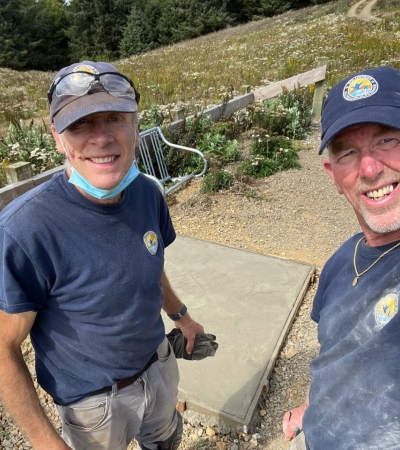Facility
Location
7715 Lakeville hwy
Petaluma, CA 94954
United States
Volunteer Position Overview
About This Position
About San Pablo Bay National Wildlife Refuge (SPBNWR): SPBNWR comprises over 20,000 acres of North San Francisco Baylands between the Petaluma River and Napa River in Sonoma and Solano Counties, California. The refuge was established in 1974 to protect threatened and endangered species, migratory birds and their habitats. However, a myriad of other species also use the refuge year-round for nesting, stopover refuge and wintering. The refuge includes uplands, grasslands/seasonal wetlands and riparian habitats in addition to tidal marsh, open water and mudflats/submerged tidal wetlands.
The refuge – managed by the U.S. Fish and Wildlife Service – is open to the public for wildlife viewing, hunting, fishing, hiking, and environmental education. Educational programs and events provide opportunities for the public to learn about the importance of conservation, restoration and the role of the refuge in protecting wildlife in the face of more frequent weather events.
Volunteer Position Overview: This volunteer will participate in volunteer workdays at the SPBNWR under the guidance of a refuge staff member or a Volunteer Crew Leader. Workday activities include:
- Weed control including hand pulling, use of hand tools, and use of mechanical tools such as weed whackers
- Mapping of weeds and weed controlled areas
- Planting native plants into transition zone habitat
- Road and trail maintenance
- Clean up (garbage, interpretive panels, etc.)
- Native garden maintenance (Benson Center)
- Native plant nursery maintenance
- Building maintenance
- Docent tour guide
Responsibilities:
- Contacting Refuge Park Ranger and signing up for a workday
- Providing own transportation to SPBNWR
- Removing invasive vegetation, woody debris and/or trash, and performing other related tasks
- Wearing weather appropriate clothing
Qualifications: Volunteers who wish to work outside must be in moderate physical health and able to access roads and ADA trails, as most outdoor work requires going up levees and traversing distances up to a mile. Other activities will require moving though vegetation, bending, pulling/cutting and hauling material. Knowledge of plant identification is helpful but not necessary as the volunteer will receive training on the job. Must wear proper protective equipment (such as gloves, eye and ear protection, etc.) as necessary for the assignment that day.
Work Environment Including Job Hazards: Some units of the Refuge, including the main office, are situated next to Highway 37. Thus, volunteers should take special precautions when entering and exiting field sites, as traffic may move at 65mph. Ticks and mosquitos are present on the Refuge, so bug repellant is recommended when working in the field.
Weather conditions are moderate for most of the year; however, there are occasional environmental hazards. Summers can be hot with temperatures reaching mid-90s, so sunscreen and hats are strongly recommended. Heat exhaustion and heat stroke may occur if volunteers are sensitive to heat. Breaks will be taken frequently, and volunteers and staff should make sure to drink plenty of water! If weather conditions are extreme (heat, smoke, rain), workdays may be cancelled.
Reasons to Volunteer:
- Actively contribute to the mission of the U.S. Fish & Wildlife Service – to work with others to conserve, protect, and enhance fish, wildlife, and plants and their habitats for the continuing benefit of the American people
- Make a significant difference to the health and conservation of San Pablo Bay’s habitats through critical environmental management
- Access a National Wildlife Refuge and experience firsthand this outdoors natural history museum
- Receive environmental education/interpretation and learn about the history of this special location in the Bay
- There will be opportunities to meet and network with other volunteers and refuge staff
Contact: Nick Asfaha (Park Ranger) at 510-737-1252 or nicholas_asfaha@fws.gov
Stories About Volunteering
Other Ways to Work with Us
Are you looking for something different than a volunteer opportunity? The Fish and Wildlife Service employs around 9,000 people nationwide and offers great internship opportunities every year.







